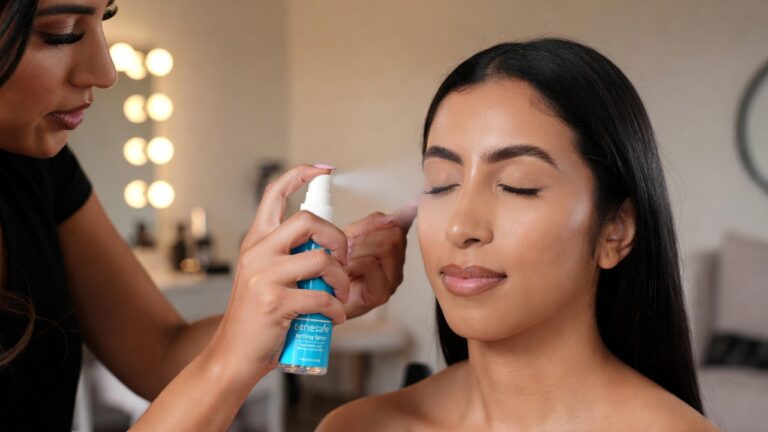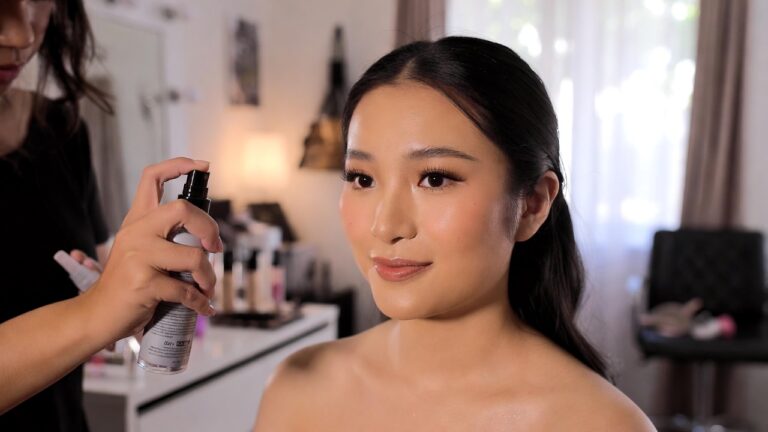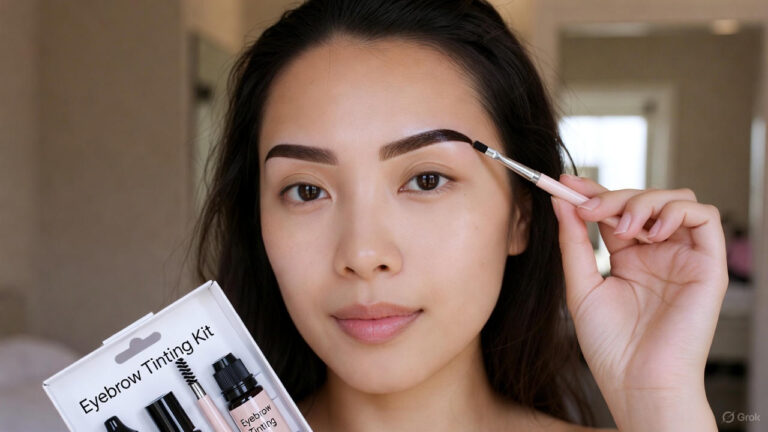Our skin, the body’s largest organ, is as responsive to the environment as we are. Just as we adapt our clothing and activities to changing weather, our skincare routine also requires adjustments.
The impact of weather on your skincare routine is profound. Different climates, temperatures, and humidity levels can affect your skin in unique ways.
In this comprehensive guide, we will explore the impact of weather on your skin and provide practical tips on adapting your skincare regimen to keep your skin healthy and radiant throughout the seasons.
I. The Effects of Dry and Cold Weather
How Dry and Cold Weather Affects the Skin
Dry, cold weather can sap the moisture from your skin, leading to dryness, flakiness, and even irritation. Low humidity and harsh winds exacerbate these effects.
As winter sets in, dry and cold weather conditions can wreak havoc on your skin. These harsh elements strip your skin of its natural moisture, often leading to dryness, flakiness, and even irritation.
The combination of low humidity and biting winds can exacerbate these effects, making it crucial to adjust your skincare routine.
Strategies for Adapting Your Skincare Routine
To combat the impact of cold and dry weather, incorporate richer moisturizers, hydrating serums, and protective balms. Don’t forget to exfoliate to remove dry skin cells.
Adapting your skincare routine to dry and cold weather requires a few key adjustments. Consider using richer moisturizers that provide a protective barrier, hydrating serums to lock in moisture, and protective balms to shield your skin from the harsh elements. Exfoliation is also essential to remove dry skin cells and allow your products to penetrate effectively.
II. The Impact of Hot and Humid Weather
How Hot and Humid Weather Affects the Skin
Hot and humid weather can cause an increase in oil production, leading to breakouts and congestion. The added moisture can also contribute to skin sensitivity.
Conversely, hot and humid weather presents its own set of challenges for your skin. The increase in heat and humidity can trigger your skin to produce excess oil, often resulting in breakouts and congestion. Additionally, the added moisture in the air can make your skin more sensitive and prone to irritation.
Strategies for Adapting Your Skincare Routine
To address the impact of hot and humid weather, opt for lightweight, oil-free products. Don’t skip sunscreen, and consider adding anti-oxidant-rich serums to combat free radical damage.
Adapting your skincare routine for hot and humid weather involves selecting lightweight, oil-free products that won’t clog your pores. Sunscreen remains non-negotiable, but opt for a lightweight, non-comedogenic formula. Additionally, consider incorporating antioxidant-rich serums to combat free radical damage in these conditions.
III. Seasonal Changes and Skincare
The Importance of Adjusting Skincare Routines with the Seasons
Seasonal changes significantly impact your skin. Adapting your skincare routine allows your skin to thrive in the face of diverse weather conditions.
Adapting your skincare routine with the seasons is essential for maintaining healthy skin. Seasonal changes significantly impact your skin’s needs, and adjustments are necessary to ensure it thrives despite the ever-changing weather conditions.
Tips for Transitioning Between Seasons
Transitioning between seasons requires a gradual shift in your skincare regimen. Start by introducing new products gradually and observing how your skin responds.
Transitioning between seasons can be a delicate process for your skin. To do this successfully, introduce new products gradually and observe how your skin responds to ensure a smooth transition.
III. Extreme Weather Conditions and Special Considerations
The Challenges Posed by Extreme Weather Conditions
Extreme weather conditions, such as intense cold, heatwaves, and high altitudes, require special attention. These conditions can lead to severe dryness, sunburn, and windburn.
Extreme weather conditions pose unique challenges. Whether you’re facing intense cold, heatwaves, or high altitudes, your skin may experience severe dryness, sunburn, or windburn, necessitating special care.
Special Skincare Considerations for Extreme Climates
In extreme climates, focus on protective measures like barrier creams, extra hydration, and diligent sun protection. Don’t forget to soothe and repair your skin afterward.
In extreme climates, prioritize protective measures to shield your skin from harsh conditions. This may include using barrier creams, providing extra hydration, and ensuring diligent sun protection. After exposure, soothe and repair your skin to recover from the effects of extreme weather.
IV. Personalizing Your Skincare Routine
Understanding Your Skin Type and Its Unique Needs
Understanding your skin type is paramount to personalizing your skincare routine. Oily, dry, sensitive, and combination skin all require tailored care.
Personalizing your skincare routine starts with understanding your unique skin type. Whether you have oily, dry, sensitive, or combination skin, tailoring your care accordingly is crucial for achieving optimal results.
Tailoring Your Routine to Your Specific Weather Conditions
For a truly personalized skincare routine, make adjustments based on the current weather conditions you’re experiencing. A flexible routine is key to addressing your skin’s needs.
Achieving a truly personalized skincare routine involves making adjustments based on the specific weather conditions you’re facing. A flexible approach is key to addressing your skin’s changing needs effectively.
V. The Role of Sun Protection in All Weather
The Year-Round Importance of Sun Protection
Sun protection is a year-round necessity. Even on cloudy days, UV rays can cause damage to your skin. Choose broad-spectrum sunscreen daily.
Sun protection is a non-negotiable aspect of your skincare routine year-round. Even on cloudy days, harmful UV rays can cause damage to your skin. To shield your skin effectively, choose a broad-spectrum sunscreen and make it a daily essential.
Choosing the Right Sunscreen for Your Climate
Selecting the right sunscreen for your climate is essential. Opt for lightweight, non-comedogenic options in humid weather, and consider higher SPF ratings in sunnier regions.
Selecting the right sunscreen for your climate is crucial. In humid weather, opt for lightweight, non-comedogenic options. In sunnier regions, consider higher SPF ratings and water-resistant formulas to ensure adequate protection.
Conclusion
The impact of weather on your skincare routine is undeniable. Whether you’re facing dry winters, hot summers, or extreme weather conditions, your skin requires tailored care to stay healthy and radiant. Adapting your skincare regimen and understanding your skin’s unique needs in varying weather conditions is the key to achieving and maintaining beautiful, healthy skin.
Frequently Asked Questions (FAQs)
1. Does weather affect skincare?
Yes, weather significantly affects skincare. Different climates and temperatures can impact your skin’s moisture levels, oil production, and sensitivity.
2. How does weather change affect your skin?
Weather changes can affect your skin by causing dryness, breakouts, and sensitivity. Adjusting your skincare routine is essential to address these effects.
3. How do you take care of your skin during weather change?
Taking care of your skin during weather changes involves adapting your skincare routine to address the specific needs of your skin in different climates and temperatures.
4. How long does it take for your skin to adjust to a new climate?
The time it takes for your skin to adjust to a new climate varies from person to person and depends on factors like your skin type and the severity of the weather change.
5. Why does my face break out when the weather changes?
Weather changes can lead to increased oil production and clogged pores, resulting in breakouts. Adjusting your skincare routine can help prevent this.
6. When the seasons change skincare?
When the seasons change, it’s crucial to adjust your skincare routine to cater to your skin’s changing needs and the impact of the new weather conditions.
7. What season does skin become oily?
Skin can become oilier during hot and humid seasons when increased heat and humidity stimulate the sebaceous glands to produce more oil.
8. Should skincare change with seasons?
Yes, skincare should change with the seasons to address the unique needs of your skin in varying weather conditions and temperatures.
9. Is skin clearer in summer or winter?
Skin clarity can vary from person to person, but many find their skin clearer in the summer due to increased sunlight and reduced dryness.
10. What weather is best for skin?
Mild and temperate weather conditions are generally considered best for the skin, as they minimize extremes in temperature and humidity.
11. Does cold weather make your skin look younger?
Cold weather can help reduce inflammation and redness, making the skin appear firmer and potentially more youthful.
12. What temperature is best for clear skin?
Clear skin often thrives in moderate temperatures that neither excessively dry nor humid, promoting a balanced skin environment.



